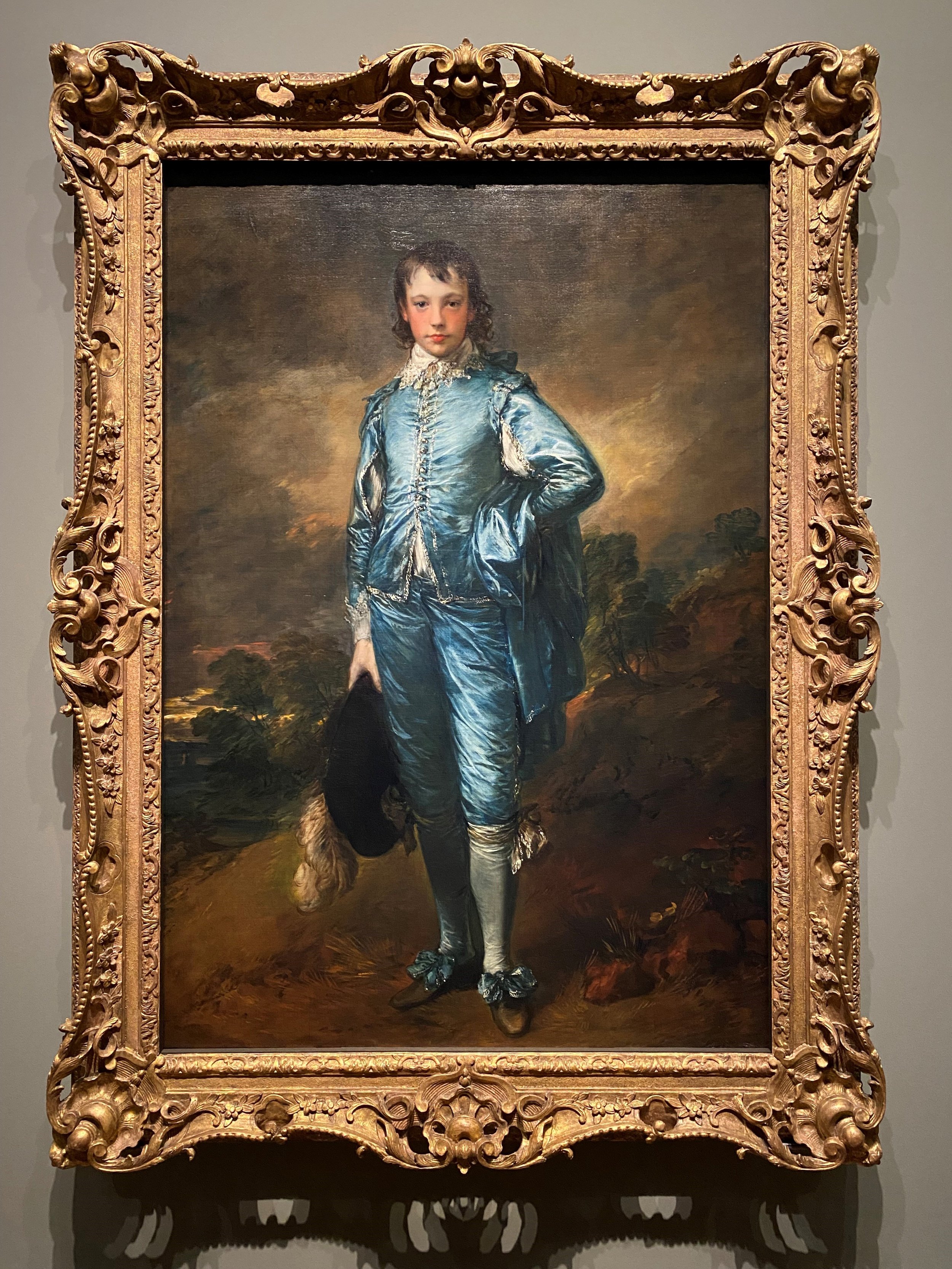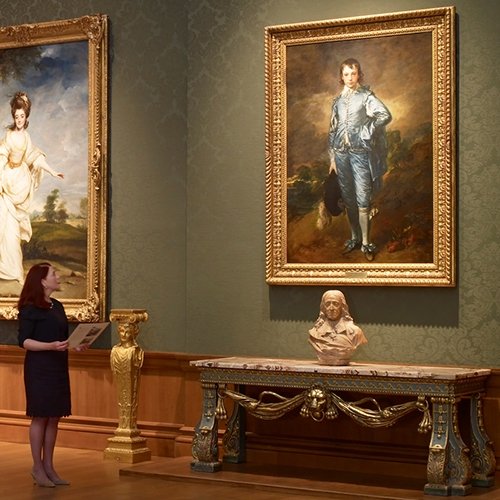Framing The Blue Boy
Thomas Gainsborough, The Blue Boy, 1770. Huntington Art Museum, San Marino, California, reframed in a mid-18th century rococo frame.
Gainsborough’s The Blue Boy, a masterpiece within the artist’s oeuvre, is a globally iconic painting, and the most famous work of art in The Huntington Collection. The public approaches this picture with enormous expectation and it is the role of the picture frame to show the painting to its best advantage. Wiggins reframed the painting in 2013.
The Blue Boy at the National Gallery in 1922, shown with its 19th century frame.
Gainsborough’s The Blue Boy was sold to Henry E Huntington, the rail and property magnate, in 1921 by the art dealer Joseph Duveen for roughly $728,000. It was the most expensive artwork in the world at the time. Before leaving England for California, The Blue Boy was exhibited for three weeks at the National Gallery, London, where it was viewed by 90,000 visitors, adding to its legendary status. Before it left, the then Director of The National Gallery, Charles Holmes, wrote ‘au revoir’ on the reverse of the painting, in the hope that it would one day return.
The Blue Boy as it appeared in the Huntington Art Gallery in the 1920’s and early 1930’s in the frame from the previous owner, Hugh Grosvenor, 2nd Duke of Westminster
It was Duveen’s practice to aggrandise paintings for the art market by reframing. Though his framing style was based on historic prototypes, often in the French taste, they were wider and grander. However, when Blue Boy arrived with Huntington it had not been reframed by Duveen but was likely in the same frame it had been displayed in by the previous owner, Hugh Grosvenor, 2nd Duke of Westminster. This fussy and elaborate Victorian frame would have been deeply out of fashion by 1938, when the Huntington’s curator of art collections, Maurice Block, responding to complaints about the painting’s “bulky 19th-century frame”, reframed the painting. According to a memo written on 6th May that year, “We have cut down one of our old frames to put the Blue Boy into it”. This replacement frame was of the Duveen Carlo Maratta type, wider and grander than its 18th century prototype, and appears to have been an extra supplied by Duveen, kept in storage in the Huntington Art Gallery basement.
The Blue Boy in the Duveen frame of the Maratta pattern, adapted for the painting in 1938.
This temporary framing fix remained until the framing of Blue Boy was reviewed by the Director and Chief Curator of The Huntington Art Museum in 2013. The other English portraits in The Huntington's Thornton Portrait Gallery retain the frames that Duveen supplied them in. Some were in frames of the French Régence taste or the English ‘Maratta’ style. As The Blue Boy was framed in the same pattern as other portraits in the gallery it was thought that the frame did not distinguish the painting sufficiently. Given the work’s iconic status, and since the frame was not original to the painting, it was decided that The Blue Boy could be reframed. The other great masterpiece in the Thornton Portrait Gallery, Thomas Lawrence’s ‘Pinkie’: Sarah Barrett Moulton, is framed in a swagger Duveen frame of the Louis XV type. An equally commanding presentation was needed for The Blue Boy.
The process of reframing Gainsborough’s The Blue Boy presented the opportunity to reevaluate how the picture is viewed. Placing it in a grand, mid-18th century, richly carved, rococo frame, which has its own intrinsic quality and craftsmanship, asserts the importance of this masterpiece.
Michael Gregory
The reframing was made possible by a gift from longtime Huntington donors Jim and Joan Caillouette.
The Huntington Art Museum
www.huntington.org/blue-boy
The National Gallery London
Gainsborough’s masterpiece 'The Blue Boy' returns to the UK
Exactly 100 years, to the day, since it left
25 January – 15 May 2022
Room 46
Admission free
https://www.nationalgallery.org.uk/exhibitions/gainsboroughs-blue-boy






